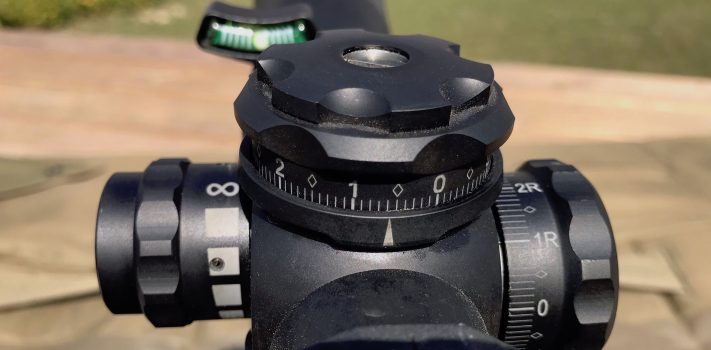Email a copy of 'Range Estimation and Windage with Mil Reticles - Part 2, by N.E.' to a friend
13 Comments
- Ad SOURCE FOR IVERMECTIN / HCQ, ANTIBIOTICS, ALL REGULAR MEDS“Mygenericstore” is a well-established pharmacy service that deals primarily with generic medicines produced by quality-assured manufacturers from developing countries.
- Ad Civil Defense ManualHow to protect, you, your family, friends and neighborhood in coming times of civil unrest… and so much more, Go to www.civildefensemanual.com for contents.


NE: Thanks for a very nicely written article. There was just one important point I wanted you to clarify. In the first example, you stated .3 wind adjustment is needed. In the second example, you state 1.358 clicks of adjustment to our right.
If I understand correctly, the result of the equation should be in mils. Then the first example should be .3 mils or 3 clicks of adjustment on your scope. The second example should be 1.358 mils of adjustment needed or 13 clicks on the scope turret.
DC,
As there are 10 clicks in 1 mil, I never realized until these articles that I have a tendency to use 1.3 mils and or 13 clicks interchangeably. In my minds eye, they are one in the same, but, yes, you are correct. Thank you for pointing that out.
This is written for mil dot scopes. For those of us that MOA – minute of angle scopes this doesn’t apply. One MOA is four clicks on the scope not the ten clicks per mil dot. Must of us have MOA scopes as that is what the sporting stores sell primarily. Military and police use mil dot.
Good article to get us all awareness.
Jefferson,
Thanks for pointing out a difference in MOA and Mil scopes.
I would add that while MOA scopes seem to be favored among F-class shooters, Mil scopes are widely available in today’s market and it seems to just be a personal preference between the two. Mil scopes are just as available as MOA scopes now.
Good article. I’ve never been much of a shooter out beyond 200-300 yards, never had the training. This is good info to get me started on longer range shooting. Thanks!
It is very rewarding once you get the hang of it, I took a friend once that had very limited experience shooting all of it at 100yds or less. I took him to a big shoot in Blakley GA at the 1000meter range. He loved the “sniper” movies so he was going to “spot” for me, so he looking through the spotting scope, at what I’m not sure, but I tell him which plate I’m targeting, First is a 100 yard gong just to confirm zero and for me to loosen up a little.
Bang!
Ding!
“Hit!” He shouts, I roll my eyes
After a couple of those he’s pretty pumped relishing his spotter role and I tell him we’re switching targets I tell him which one and give him a second to adjust, it’s an 800 yard gong…
Bang!
“Miss!” He yells in a disappointed voice.
Pause
Ding!
This a hilarious story! Thanks for sharing that. It made me laugh out loud.
Thanks for the article, I learned about mil dot and range finding with it. My range goes out to 300 yards, have never taken a shot longer than that. Always good to learn new info. Never know what kind of rifle drops in your lap sometime in the future.
Yep, that is a fine story. Even the supersonic bullet takes time to arrive.
Carry on
Not just the time for the supersonic bullet to go 800 yards but even longer for the sound to get back to the shooter. If he would have really been paying attention, you can usually see the bullet splash on the metal gong through the spotting scope way before you get the audible confirmation.
try as i may i’ll never understand scope settings…so i stick with iron sights…sigh
Great information and some easy to use formulas. I’ve got a 300WM with a mil dot mounted on it and have been going nuts trying to do the mental math and get better with it as modern gun season here in KY edges closer this year. One question, or rather clarification on wind “value”. Have been helping the daughter with calculus homework as of late, lot of sin, cosine, tangent calculating and such. Shouldn’t a 30 degree wind deviation “value” end up being a 1/2 value wind while a 45 degree wind should end up at a 3/4 value call. I’m speaking of angle measured from target not from 3 or 9 o’clock. I believe 60 to 65 degrees as measured from target is around 7/8 value if my thinking is on point.
Thanks again for breaking it down like this. Been studying wind constants and their application as well. Feels like the light bulb is getting brighter.
Busflyer,
Good question. If I understand it correctly, the angle is that if 90 degrees is full value, then 45 would be half of that. The angle in relation to shot direction does not need to more complex than a 90 degree angle. Meaning, I am not sure there is a reason to add a 180, or a 360 to break it down further. In this sense, 45 would be a 3/4 (or 1/4th) if we are using 360, but it is easier to use 90s, and then dial either left or right to compensate for the particular quadrant.
I am certainly not an expert on the wind, and I am still learning how it works. Try searching a wind rose from the snipershide forum. There are a couple of really good ones there.